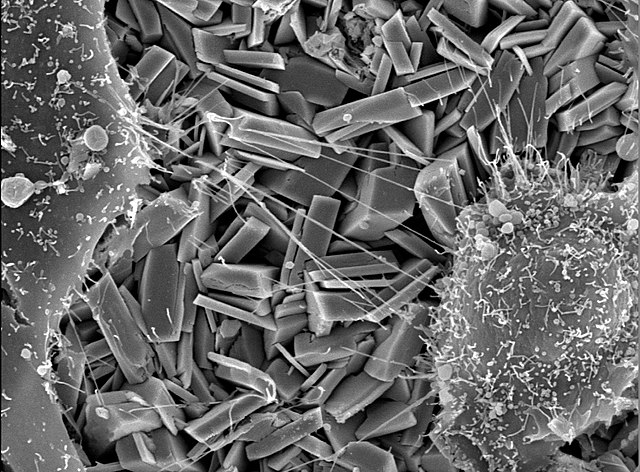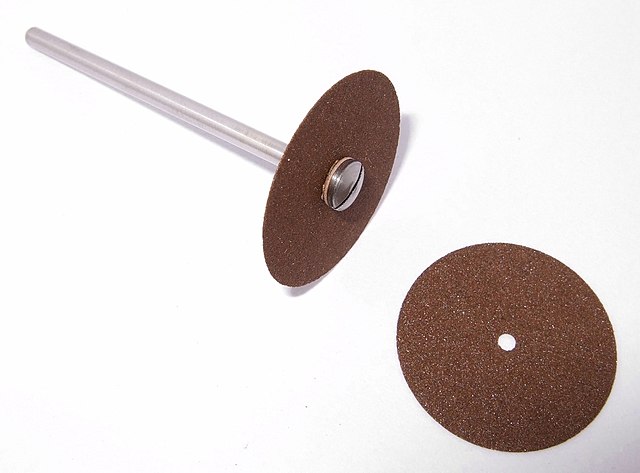Glass-ceramics are polycrystalline materials produced through controlled crystallization of base glass, producing a fine uniform dispersion of crystals throughout the bulk material. Crystallization is accomplished by subjecting suitable glasses to a carefully regulated heat treatment schedule, resulting in the nucleation and growth of crystal phases. In many cases, the crystallization process can proceed to near completion, but in a small proportion of processes, the residual glass phase often remains.
SEM image of two bone-forming osteoblasts crawling over monetite crystals.
A glass-ceramic cooktop
CorningWare casserole dish and other cookware pieces, with the 'Cornflower' pattern decoration
A ceramic is any of the various hard, brittle, heat-resistant, and corrosion-resistant materials made by shaping and then firing an inorganic, nonmetallic material, such as clay, at a high temperature. Common examples are earthenware, porcelain, and brick.
Silicon nitride rocket thruster. Left: Mounted in test stand. Right: Being tested with H2/O2 propellants.
Earliest known ceramics are the Gravettian figurines that date to 29,000–25,000 BC.
Corded-Ware culture pottery from 2500 BC
Cutting disks made of silicon carbide







